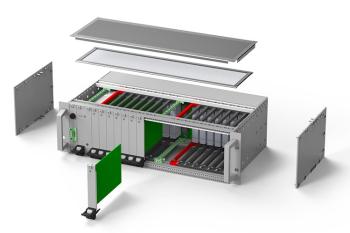Separating the wheat from the chaff
Image processing ensures larger harvests in agriculture
Climate change, increasing costs of oil-based fertilizers and the growing demand for bio-cultivation methods are bringing about changes in agriculture. As a result, new and more efficient technologies are required. Two examples illustrate how cameras can increase efficiency for farmers.
The cultivation of fruit and vegetables is developing into a science, which is characterised by precise processes. Once a product has been harvested, the supplier must categorise it into classes and sort it for each customer. In addition, the categorisation ensures a longer shelf-life. Thanks to correct sorting, damaged fruits can be identified, which emit the ripening gas ethylene (C2H4) and can therefore spoil entire batches. Here, image processing systems enable fruit and vegetables to be sorted and categorised more quickly and precisely.
Example I: sorting fruit and vegetables
The Dutch process engineer Ellips installs a system in its plant, which is equipped with Sony FireWire cameras, which is used by fruit and vegetable suppliers in Argentina, Australia, Israel, South Africa and Spain. The cameras are connected to a light source and a PC, on which a specially developed software is installed. This is used for sorting apples, pears, citrus fruits, cherries, peppers, tomatoes, asparagus and potatoes. However, the system can also be used for small batches of dates, berries and root vegetables.
In order to ensure that no spoiled goods are overlooked, the data is recorded while the fruits are transported on rollers and individually rotated by 360° underneath the camera. After analysis and categorisation of the product, it is automatically passed on to the required customer or rejected as waste.
Previously, fruit was only evaluated and categorised by weight. This caused problems in the case of fruit which was not spherical, e.g. pears. Ellips developed the first image processing system in 1989 to determine the diameter of up to three fruits per line and per second. Up to six lines could be monitored simultaneously.
The system was developed further and now uses the colour camera module XCD-U100 (1600x1200 pixel), XCD-SX90 (1280x960) or XCD-V60 (VGA) with high-performance sensors in order to ensure greater precision, speed and detection of faults.
Nowadays, fruit can be categorised and sorted with a speed of 30 items per second and line over 16 lines. The fruit is examined and passed on to 55 outlets. As well as this, the system monitors a wide variety of variables, ranging from green colour in potatoes (caused by sunlight) up to brown rot in tomatoes, size and spots. The system can also be used directly in the field, as in the case of a farm in the USA, which sorts fruit during harvesting with Ellips technology.
Example II: poultry farms
On poultry farms, the camera systems are used to monitor brooding areas. As the brooding period is the most sensitive phase of a hen's (chicken's) life, the temperature of the brooding area must always be perfect. Eggs which are not viable in the incubator can influence the temperature and cause chickens to hatch too early or too late, which reduces their survival rate. Identification, so-called candling is required during the entire brooding process in order to determine which eggs are viable. This process required a high level of concentration, as 50 billion hens are reared for food every year. The expense which this examination causes motivated poultry farms to search for reliable technical alternatives to candling.
The French company Visio Nerf therefore developed an automatic candling system, with a specially developed CPU and an illumination system combined with a Sony XC-E150 near-infra-red camera. This is capable of analysing a series of standard egg types such as turkey, duck, pheasant and hen eggs. The system examines more than 50,000 eggs per hour and according to the type and incubator, can process up to 150,000 eggs per hour, which is many times more than even an experienced examiner can manage.
Vision 2012 Stand 1C42




